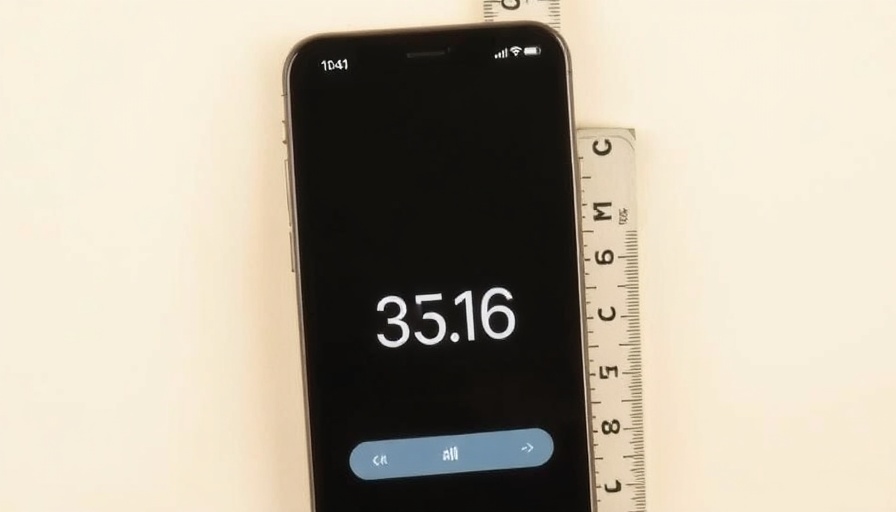
Can Apps Truly Replace Physical Tools in DIY Projects?
The question of whether a phone can truly serve as a dependable replacement for a traditional toolbox is becoming increasingly relevant in our digital age. As we explore how apps can perform tasks typically reserved for conventional tools, the evidence suggests a mixed bag of results. With the rise of DIY home improvement culture, understanding the effectiveness of these apps not only relates to convenience but also affects accuracy in projects that matter.
Evaluating Ruler Apps: Useful or Just a Temporary Fix?
Despite their apparent ease, ruler apps like Rul3r have significant limitations in terms of precision. While they serve well for quick estimates, their effectiveness diminishes with the size of the item or the necessity for precise measurements. Expert insight from electronics professionals, such as Hommer Zhao, emphasizes caution, stating that while they can help with minor tasks, relying on them for precision work may lead to disappointing outcomes.
The Digital Tape Measure: Closer but Not Quite There
Next on the list are tape measure apps, which leverage augmented reality to provide virtual measurements. However, testers found a recurring theme: accuracy issues. An example is the app My Measure, which inaccurately identified a standard piece of paper's dimensions. The key takeaway here is that while these apps can be handy in theory, in practice, they often miss the mark — potentially costing users time and materials in DIY home improvement projects.
Unpacking Leveling Apps: Can They Be Trusted?
Leveling apps utilize smartphones’ gyroscopes, theoretically positioning them to assess the levelness of surfaces accurately. Yet, as with other app categories, inconsistencies arise. Some users have reported that the apps work better in controlled environments, while prevailing inaccuracies can significantly increase the challenge of DIY renovations where even minor miscalculations can lead to unsatisfactory results.
The Importance of Physical Tools in DIY Home Projects
So where does this leave DIY enthusiasts? While the convenience of apps cannot be overstated, many users, regardless of their tech savviness, continue to advocate for keeping traditional tools on hand. Reliable physical tools guarantee the reliability that apps can’t always promise. For significant home repairs or renovations, investing in high-quality tools remains critical.
DIY Home Projects: Bridging the Gap Between Digital and Physical
For those passionate about DIY home improvement, the clear message is to look carefully at the tools you choose to utilize. Phone apps can augment your toolbox by providing initial measurements and planning assistance. Still, skilled tradespeople recommend ensuring that traditional tools are readily accessible for tasks requiring that precision which apps sometimes lack.
Real-life Insights: What DIY Enthusiasts Think
What do real DIY enthusiasts feel about integrating digital options into their toolkits? Anecdotes from community forums reveal that many appreciate the accessibility of measuring and leveling apps, especially for quick tasks. However, consensus indicates that the confidence to tackle larger renovations still leans heavily on familiar, tactile tools—suggesting a dual approach where technology complements tradition rather than replaces it.
Future Predictions: What's Next for DIY Tools?
As technology continues to evolve, the possibilities for future apps are vast. It’s conceivable that advancements in AR will bridge the accuracy gap seen in current applications, allowing users to enjoy the convenience without sacrificing dependability. For now, DIY home improvement remains a realm where both digital innovation and traditional craftsmanship have roles to play.
Actionable Steps: Navigating Your DIY Projects
Ultimately, as you dive into planning your next home decor or renovation projects, consider the balance of tools at your disposal. Sweeten the deal by exploring affordable DIY home decor alternatives that can complement any budget. Maintain a toolkit filled with both physical and digital solutions, and personalize your space effectively, giving yourself the flexibility to choose the best tool for each unique task ahead.
 Add Row
Add Row  Add
Add 




Write A Comment